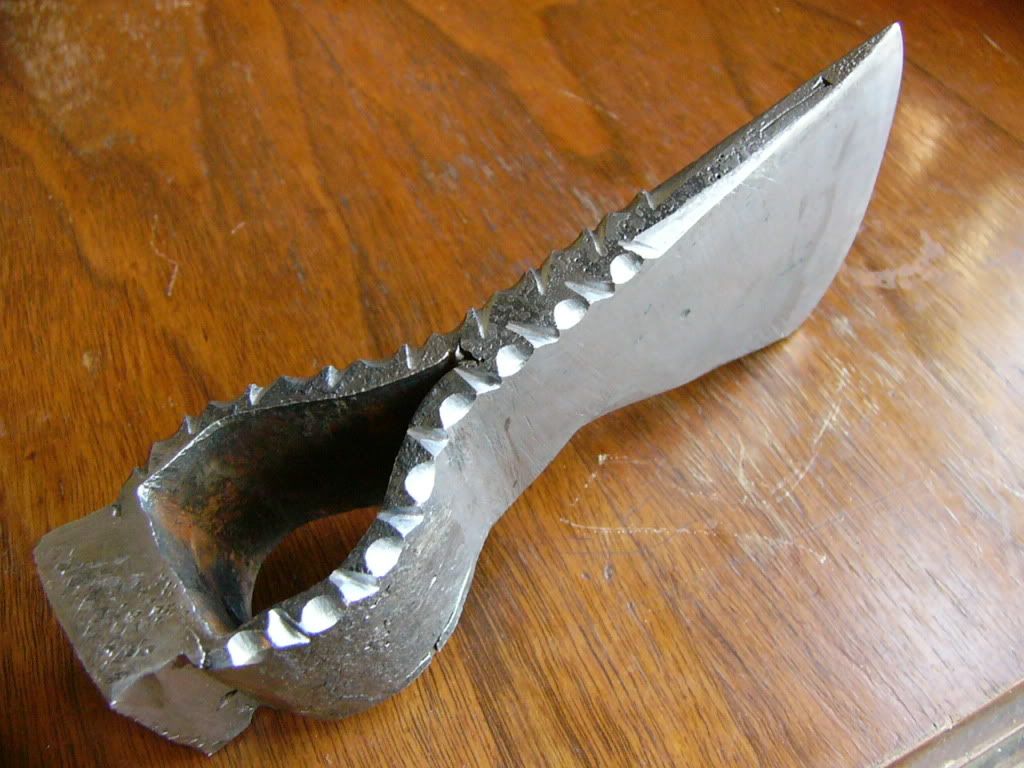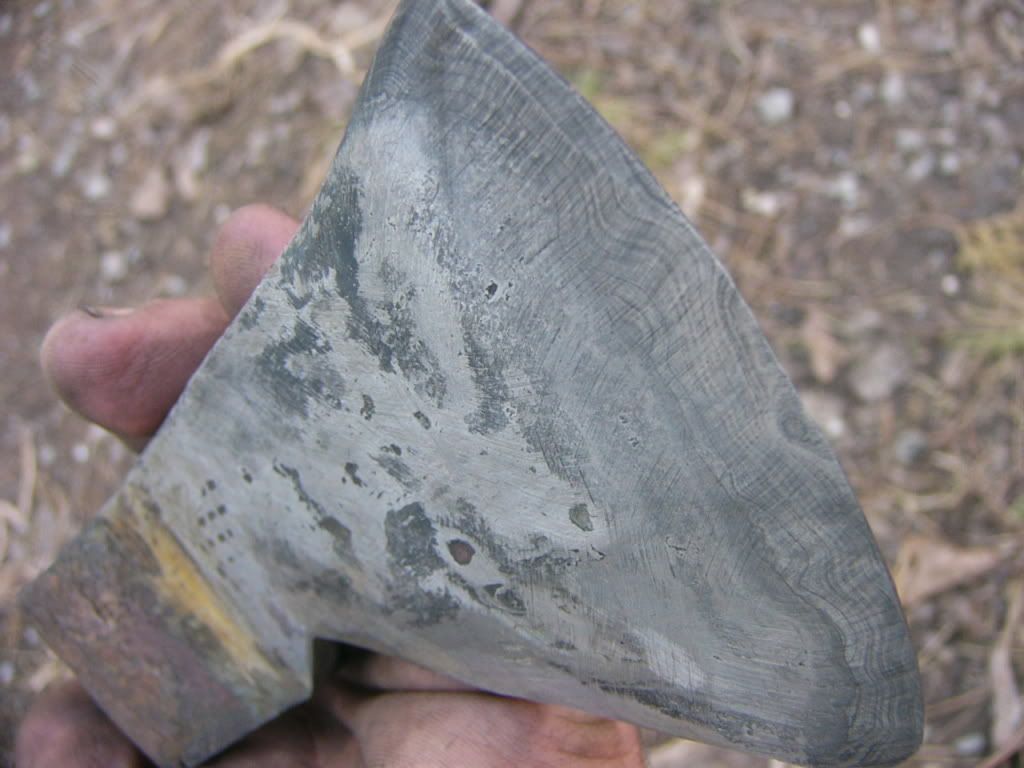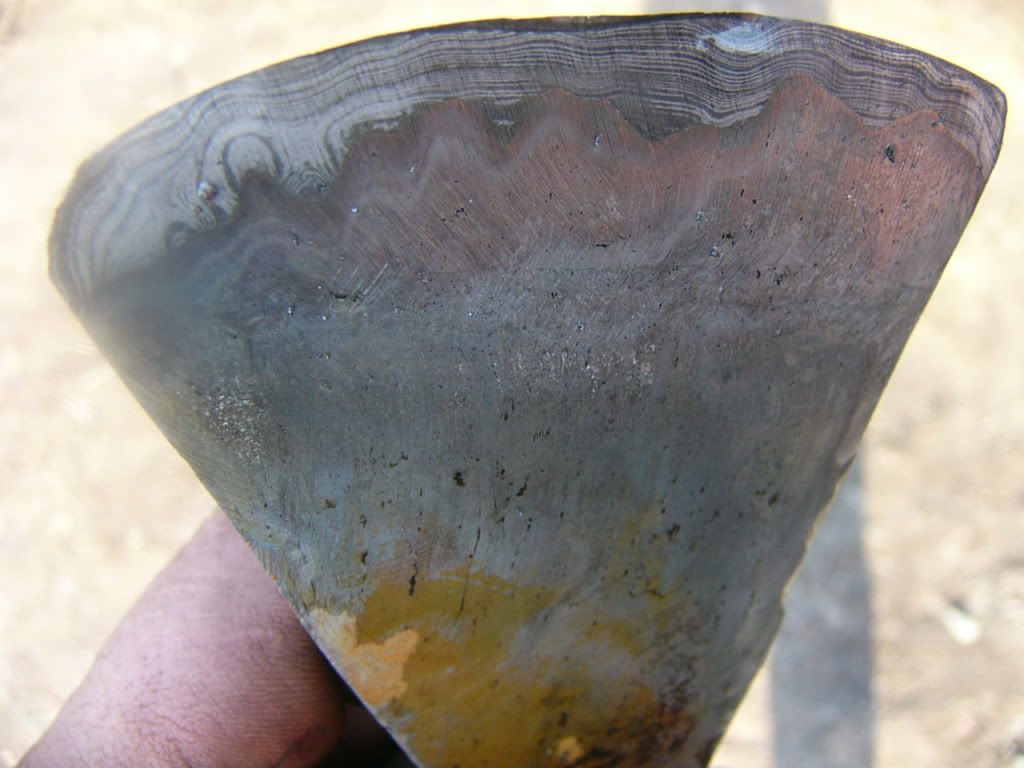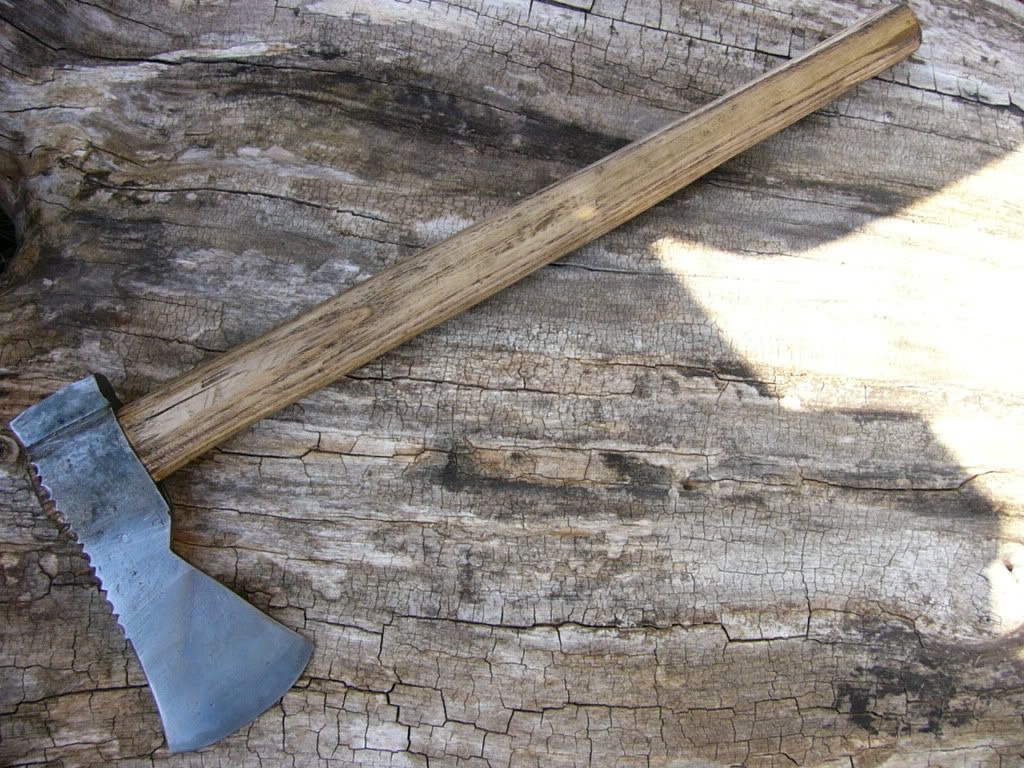snowdragon said:
Ok, I gotta ask, why do you fold the metal? I'm no blacksmith, just trying to learn something here. I've heard each new surface picks up carbon from the fuel, thereby eventually making iron into steel. I've also heard that the folds add strength to the metal by giving it a grain structure like wood. What is it? Thanks, Bill.
P.S. Nice work. I can see where it looks like you folded the metal around to the front, then welded on the steel. I would love to learn that someday.
LHunter said:
The idea basically is you layer 2 or 3 different type steels these will be of different carbon content and overall make up will be some what different, you may have more chromium in one and more vanadium in another or a combo of other elements. You stack it up every other layer is different type steel and tie it up with wire flux, weld it and cut it part way through bend over and start all over re weld it this gives multiple layers which add to the design that you will get plus it makes for a tuff blade. Also the smith may weld this a couple times or more drawing it out longer as he goes and then he may twist it and then fold again and weld it. Some of these guys know just how to fold and twist to get a certain pattern. As far as converting iron to steel it takes a lot more then carbon migration from a coal fired forge. Sorry for being long winded hope it helps you understand.
I am sorry Snowdragon I thought you were asking about how the tomahawk was made. If your asking about making of Damascus here is a link to how it is made.
http://www.ehow.com/how-does_5498214_do-make-damascus-steel.html
As for Damascus it wasn't used much in America in the 1800's. There were some guns mostly shotguns but they were usually not manufactured in America! In fact most Damascus in that time period came from Sheffield and places like that.
Most blacksmiths in what was to become the states were too busy repairing guns, traps and making things for the Indian trade.
I just finished reading Firearms, Traps, and Tools of the Mountain Man by Carl P Russell in which they intensively describe the process of either splitting the steel that an ax or tomahawk was to made from or the other process where both halves are forged from on piece of steel to install a quality piece of steel to make the bit for that ax or tomahawk. At times quality steel was a premium and the back side of the ax or tomahawk could and would be made from lesser steel such as wrought iron.
The book goes on to say, that at most forts and such as they were scattered through the wilderness that a blacksmith was so prized that he often received twice or more the pay of a bookkeeper!
By the way I don't think I said it but
Rusty I like the tomahawk.:thumbsup:
This is a process that can be hard to get right so I can appreciate the great amount of work the went into this one!
The book talked about the American Indian loved to get their hands on a file. Not only could they use it too sharpen their tools but loved to embellish them with file work too! So all the file work fits very well. A tomahawk was one of their most prized possession, as I am sure that will be one of yours!











